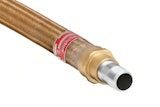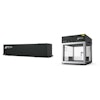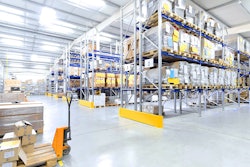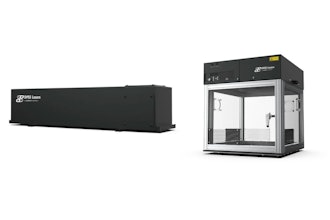
 Dmitri Tcherevik
Dmitri TcherevikIn the industrial sector, machine downtime and asset failure can be some of the biggest costs that companies incur. Downtime is already a multi-billion-dollar problem and it will only continue to grow as companies strive to optimize their operations in the pursuit of better margins and greater efficiency. While the magic number changes from business to business and industry to industry, one study conducted by the International Society of Automation estimates that downtime costs the manufacturing industry nearly $650 billion every year.
The Promise of Cognitive Anomaly Detection & Prediction
Anomaly detection is the silver bullet that enterprises need to maximize their uptime and nip machine failures in the bud. Of course, the concept of anomaly detection isn’t new — businesses have been scouring their operations for anomalies and outliers since the dawn of time. Employees would meticulously analyze data manually and inspect their equipment looking for the first signs of malfunction in an effort to prevent machine failures and downtime.
However, this process was largely inefficient for many years, especially for large businesses with operations spanning the globe. When hundreds or even thousands of machines are in play, it can be hard to identify trends or spot anomalies with any consistency before it’s too late. Even enterprises that are proficient at it still suffer from more downtime than they would care to admit because they often don’t see the root of the problem early enough.
Once a failure happens, the results can vary from severe to catastrophic. In some scenarios, companies may have to divert operations to functioning machines, which can result in production delays. In others, failures can shut down an entire factory. That can lead to the company being unable to fulfill shipments, losing contracts, missing crucial sales windows and more.
While the precise costs for downtime will vary from company to company, they can add up very quickly. For example, Justin Hester, Senior Researcher at HIROTEC’s IoT Laboratory, found that unplanned downtime to automobile original equipment manufacturers (OEMs) can cost $361 per second. Even if a problem can be addressed promptly, it can still cost thousands or even hundreds of thousands of dollars. A minute-long call to diagnose the problem could cost north of $21,000 alone!
Cognitive Computing: The Saving Grace of Anomaly Detection & Prediction
With thousands or even millions of sensors deployed across their equipment, all generating data in real-time, today’s companies are in dire need of the ability to cognitively spot anomalies. Cognitive computing can help companies keep up with the flood of sensor data by intelligently automating the data science that powers anomaly detection. This means the machines themselves can begin to identify trends and patterns, enabling them to spot and predict anomalies in advance to prevent asset failure.
Through cognitive anomaly detection, companies are better positioned to truly begin capitalizing on the value of anomaly detection and prediction. With this wealth of data available at their fingertips, businesses can address any problems before they spiral out of control — or manifest at all in the first place. Their responsiveness and accuracy will only improve as more sensor data is collected and analyzed for trends and patterns.
The Real Value of Anomaly Detection and Prediction
At the base level, anomaly detection and prediction help businesses prevent machine downtime and asset failure before it even happens. Ensuring continued uptime is worth a lot of itself — manufacturers not only keep the pace of operations normalized, but also avoid any potential PR fiascoes and lost clients or customers that could stem from downtime.
That’s just scratching the surface. Here are some other areas in which cognitive anomaly detection and prediction could provide some real value, both directly and indirectly:
- Repair and maintenance: Repairing an asset that has failed or broken down costs 50 percent more than if the problem was identified prior to the failure. Imagine if more points of failure could be identified earlier — that would result in significant savings on repairs.
- Workplace safety: Workplace accidents are tragic across the board. With anomaly detection, manufacturers are better positioned to identify hazards before they cause a major accident. What if you had discovered an anomaly and fixed it before it caused a fire that disrupted operations, destroyed product and injured employees?
- Inventory management and control: Between doing repairs and replacing parts, maintaining equipment can be a burden. Not only do these extra replacement parts and equipment take up space in the factory, they also cost money that could be better spent elsewhere as they sit unused. With better insight into how machines work and advanced notification of when equipment may need to be fixed, businesses will be able to better plan their equipment maintenance ahead of time. This means no closets full of extra parts and inventory that tie up their capital and take up space.
Anomaly detection and prediction for IoT will help the industrial sector dig deep beyond the surface level to truly understand how their machines operate. As a greater number of sensors are deployed, the prospect of anomaly detection becomes even more attractive as companies gain insight into how and why downtime happens.
Dmitri Tcherevik is Chief Technology Officer at Progress.























